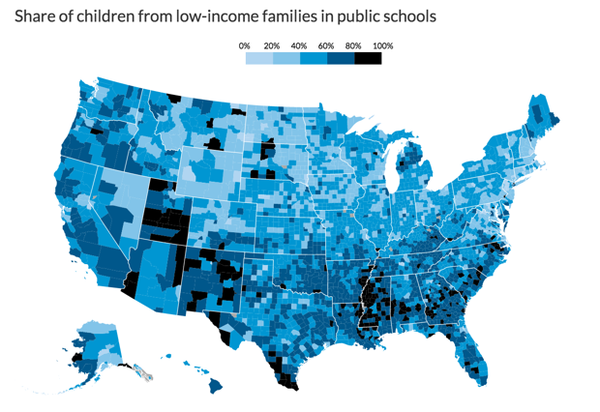U.S. public schools and the neighborhoods in which they’re located are inextricably tied together. Growing up in economically segregated, low-income neighborhoods comes with a host of disadvantages, one of which is that local schools tend to be underfunded. That means that kids who attend these schools don’t get the same kinds of opportunities and resources that students in other, better schools, do. As a result, their academic performance and, ultimately, their propensity for social and economic mobility suffers.
Earlier this year, the Southern Education Foundation released a report that revealed the full scale of just how many disadvantaged public school attendees there are in the United States. They calculated how many students qualify for free and reduced-price lunches, and found that these pupils make up more than half of those attending public schools in the U.S. (Given changing enrollment and eligibility rules, school lunch eligibility isn’t perfectly demonstrative of poverty—but it’s still a pretty good indicator of it.)
The SEF study examined concentrated poverty in American public schools by state. Now, the Urban Institute has taken a deeper dive by mapping the data by county, illuminating how poverty and race are distributed in public schools across the country.
[For more of this story, written by Ranvi Misra, go to http://www.citylab.com/housing...hools-mapped/393095/]




Comments (0)